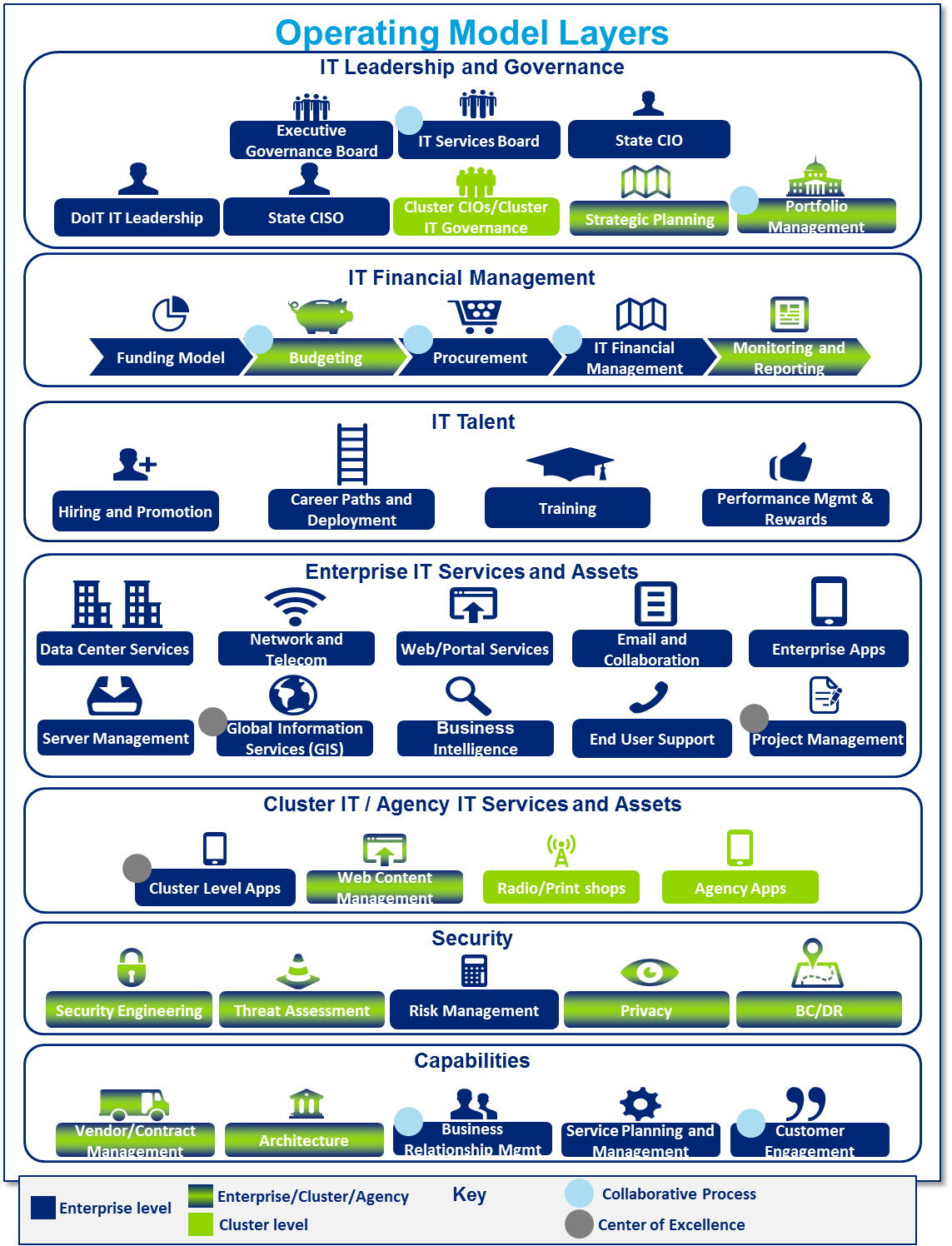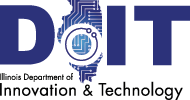Operating Model
In the future state DoIT operating model, an overarching governance model enables effective decision making on IT strategy as well as a collaborative set of processes to bubble up specific and shared needs from Agencies. The model provides for unified control over the IT spend and unified management of IT employees but also allows for flexibility in meeting agency specific IT needs and collaboration.
The model focuses on differentiating services that are common and fundamental across all agencies and are provided at the enterprise level. Centers of excellence deploy staff for cluster level services/projects, though no staff sit at the cluster level. Agencies house staff to provide services and conduct projects related to agency specific applications or technologies. Though services may be offered at both enterprise and agency levels, all IT staff use common ITSM or ITIL processes to create a more efficient, standardized and repeatable approach to delivering IT services.

Expected Benefits
Driving towards this new operating model will yield the following benefits for the State:
- Improved management of the nearly $1B portfolio of IT investments
- Greater agency oversight of IT services and more transparent rates
- Greater ability to leverage the state’s economy of scale in purchasing IT
- A unified IT workforce nearly 1,700 members strong
- Rapid deployment of new agency solutions based on 75 day sprints
- Increased use of new shared enterprise applications for common capabilities
- Increased percentage of citizen and business interaction that are mobile enabled
- Increased percentage of citizen and business interaction that are mobile enabled

